Introduction
Additive manufacturing (AM) has enabled the production of highly complex metal structures. In particular, the group of laser powder bed fusion processes (LPBF) allows to produce lightweight metal parts with complex microstructure. Lattice structures are a classic example of such sophisticated components that are difficult to manufacture by more conventional manufacturing techniques.
Challenges
- Process parameters highly influence the geometry at the sub-millimeter scale of the produced lattices.
- The surface roughness is affected by the attachment of the unmelted powder on the inclined and overhanging parts of the lattice.
- Process-induced geometrical imperfections resulting from LPBF process lead to a deviation in lattice components’ expected mechanical performance.
- Process parameters optimization can guarantee a reduction of the gap between the as-built and as-designed mechanical properties of the components.
Goal
The goal of these investigations is to compare the behavior of as-built and as-designed components and to characterize the influence of the process-induced defects on the behavior of the final parts. However, efficient incorporation of as-built geometries into the computational simulation remains a challenge. Nowadays, computed tomography (CT) is the most widespread choice for the acquisition of the as-built geometry. Recent advances in the Finite Element Analysis on CT-based geometries have shown that the numerical simulation of the as-built parts leads to a better prediction of the mechanical behavior of the final AM components.
The aim of this work is to provide an experimentally validated and effective computational workflow to numerically characterize the mechanical behavior of lattice structures directly from CT scan data images. The presented workflow requires neither a 3D model reconstruction of CT scan data nor a conforming mesh generation process, which are two main issues of most of the current numerical techniques employed to investigate mechanical properties of AM components.
To this end, the Finite Cell Method (FCM) is used directly on the CT images, omitting the step of a geometric model reconstruction. FCM provides an efficient tool to incorporate the process-induced geometrical defects of the manufactured lattice components into numerical analysis allowing the comparison of as-built versus as-designed mechanical behavior. Additionally, this embedded technology provides an accurate prediction of the desired mechanical properties via a natural image-to-material-characterization workflow.
References
- N. Korshunova, G. Alaimo, S.B. Hosseini, M. Carraturo et al. “Image-based numerical characterization and experimental validation of tensile behavior of octet-truss lattice structures”, Additive Manufacturing, 101949 (2021) – doi: 10.1016/j.addma.2021.101949
- N. Korshunova, G. Alaimo, S.B. Hosseini, M. Carraturo et al. “Bending behavior of additively manufactured lattice structures: numerical characterization and experimental validation”, submitted to Material & Design.


